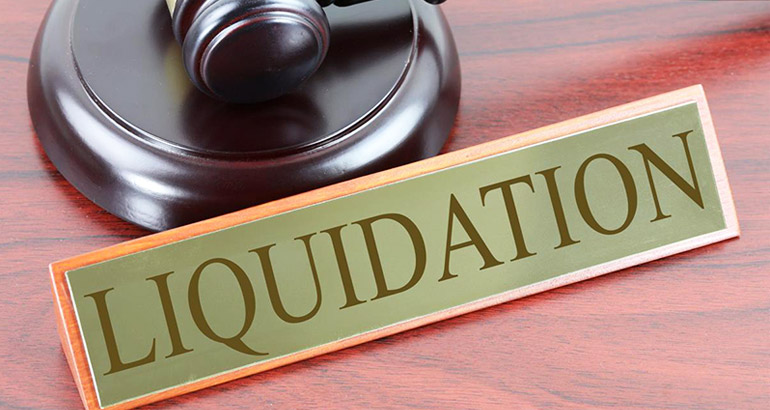5 Simple Techniques For Company Liquidation
5 Simple Techniques For Company Liquidation
Blog Article
Indicators on Company Liquidation You Need To Know
Table of ContentsThe smart Trick of Company Liquidation That Nobody is Talking AboutCompany Liquidation for DummiesThe Ultimate Guide To Company LiquidationAn Unbiased View of Company LiquidationLittle Known Facts About Company Liquidation.
A liquidator is particularly appointed to manage the winding up of a firm's affairs in order for it to be folded normally when the company is going insolvent. The liquidator is an unbiased third party that supervises the sale of business properties in order to pay off any type of superior financial obligations.Their role includes, yet is not limited to: Impartial Overseer: A liquidator is charged with functioning as an objective 3rd party to oversee the whole business liquidation procedure. Develop Declaration of Matters: Liquidators need to create a comprehensive statement of affairs record. This file is dispersed to financial institutions, describing the current economic standing of business at the time of its liquidation.
After the liquidation of a business, its existence is erased from Firms Home and it discontinues to be a legal entity. If supervisors browsed the procedure uncreative, there would certainly be no fines or personal obligation for solid financial debts expected. Now, with a fresh start, directors can explore brand-new business opportunities, though specialist examination is a good idea.
The smart Trick of Company Liquidation That Nobody is Talking About
If even more than 90% of all company shareholders agree, liquidation can take place on brief notice within seven days, the minimum statutory notification for financial institutions. Usually, the larger the liquidation and the more possessions and capital the company has, the longer the procedure will take. 'Do I need to pay to liquidate my business?', the solution will certainly rely on whether or not your business has any kind of possessions leftover when liquidating.
:max_bytes(150000):strip_icc()/Liquidation-4193561-Final-699e67d885c243c39cac2985b16d51cb.jpg)
We understand that no two business coincide, which is why we will certainly make the effort to be familiar with your organization so we can recommend the most effective strategy for you. We only function in your finest rate of interests, so you can be absolutely certain in the solution we give.
The Single Strategy To Use For Company Liquidation
In the UK, there is an established process to folding or restructuring a limited firm, whether it is solvent or bankrupt. This procedure is referred to as liquidation and can only be managed by a licensed bankruptcy practitioner (IP) according to the Bankruptcy Act 1986. There are 4 primary types of business liquidation process: Creditors' Voluntary Liquidation you can try this out (CVL); Obligatory liquidation; Management; and Members' Voluntary Liquidation (MVL).

In these conditions, it is necessary that the company discontinues trading; if business remains to trade, the directors can be held personally liable and it can lead to the bankruptcy professional reporting wrongful trading, understood as misfeasance, which may lead to lawsuit. The directors appoint a bankruptcy professional and as soon as this has been concurred and verified, there is a meeting with the investors.
The supervisors are no much longer entailed in what takes place, consisting of the sale of the firm's assets. If the directors want any of the assets, they can inform the IP.
The Of Company Liquidation
The primary difference is that the company's creditors applied to the court for a winding up order which compels the bankrupt business into a liquidation process. Creditors take this activity as a last resort because they have not gotten payment via other forms of arrangement. The court selects an insolvency practitioner, additionally understood as an official receiver, to perform the required business liquidation process.
This kind of company liquidation is not volunteer and directors' conduct is reported to the UK's Secretary of State once the liquidation procedure has actually been completed. Any supervisor that fails to work together with the IP or has actually been involved in supervisor misconduct, or a deceitful act, might result in serious consequences.
It is used as a way to secure the company from any lawsuit by its financial institutions. The directors of the company accept make normal payments to resolve their financial obligations over an amount of time. The appointed administrator manages the voluntary management procedure, and receives the payments which they then disperse to financial institutions according to the concurred amounts.
Company Liquidation Fundamentals Explained
This gives the company with time to establish a strategy going forward to rescue the business and stay clear of liquidation. At this factor, supervisors hand control of the firm over to i was reading this the assigned administrator. If a firm is solvent yet the supervisors and investors wish YOURURL.com to shut the organization, a Participants Volunteer Liquidation is the right option.
The firm liquidation procedure is managed by a liquidator appointed by the supervisors and shareholders of the company and they must authorize a statement that there are no creditors continuing to be. The liquidation procedure for an MVL resembles that of a CVL because assets are become aware but the earnings are dispersed to the supervisors and the shareholders of the company after the liquidator's costs have been paid.
Report this page